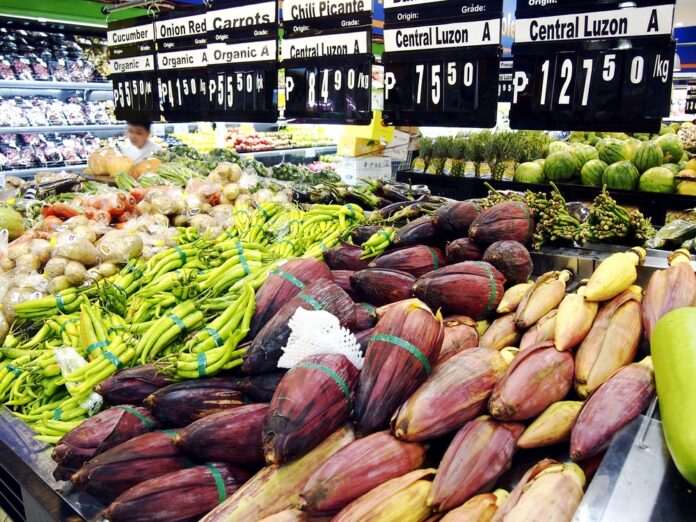Inflation, or the rate of change in prices, is forecast as high as 4.5 percent in May and should not prove lower than 3.7 percent during the month, the Bangko Sentral ng Pilipinas said on Friday.
The BSP forecast is consistent with private analysts’ views that commodities prices were to remain elevated at the upcoming price survey outcome due Wednesday next week.
Headline inflation averaged 3.4 percent the past four months.
Private forecasts show inflation averaging significantly higher in the second quarter this year to 4.7 percent and higher still to 4.9 percent in the third quarter.
This is tempered by BSP assurances that the near term outlook on inflation should benefit from lower prices on the rice staple, fish and fruits as well as domestic oil and LPG prices.
According to the BSP, the month-ahead forecast inflation is based on continued increases in electricity rates and vegetable prices aggravated by the impact of a weakened peso to only P57.762 per dollar in May from P56.951 per dollar in April.
The weakened currency compels the BSP to sell some of its US dollar holdings for the local unit to stabilize the exchange rate, releasing peso currency into the system that could complicate monetary management goals unless this is carefully calibrated.
Peso liquidity in the system, however, remain within levels the BSP considers consistent with its price stability objectives and the need to sustain the country’s growth path over the next 18 to 24 months down the line.
Preliminary data show domestic liquidity or M3 growing 5.6 percent year-on-year to about ₱17.2 trillion in April from 5.7 percent in March,” the BSP said of the latest data.
On a month-on-month seasonally-adjusted basis, M3 increased by about 0.5 percent, the BSP said of data it treats as a lagged or trailing indicator.
This much liquidity in the system helped bank lending grow 9.6 percent year-on-year in April.
“Preliminary data indicated that outstanding loans of universal and commercial banks (U/KBs), net of reverse repurchase (RRP) placements with the BSP, expanded by 9.6 percent year-on-year in April from 9.4 percent in March.
“On a month-on-month seasonally-adjusted basis, outstanding universal and commercial bank loans, net of RRPs, increased by 0.9 percent,” the BSP said.
Outstanding loans to residents, net of RRPs, rose by 9.6 percent in April from 9.5 percent in March, while outstanding loans to non-residents went up by 10.8 percent in April from 9.1 percent in the previous month.
Production loans expanded by 7.8 percent in April from 7.7 percent in March, driven by the rise in lending to key industries including real estate activities (11.0 percent); electricity, gas, steam, and airconditioning supply (9.2 percent); wholesale and retail trade, and repair of motor vehicles and motorcycles (7.6 percent); transportation and storage (21.8 percent); and construction (15.1 percent).
Consumer loans also grew 25.3 percent in April from 25.4 percent in March, due to the continued increase in credit card, motor vehicle, and salary-based general purpose consumption loans.







